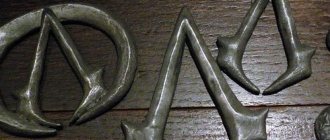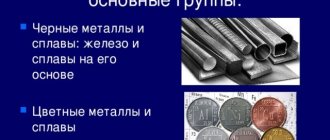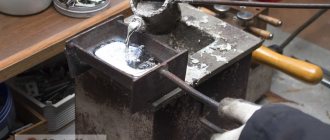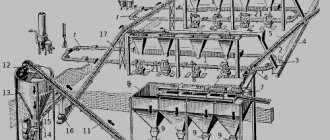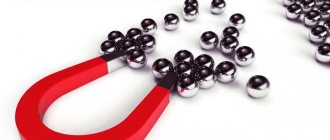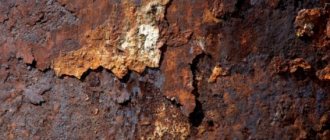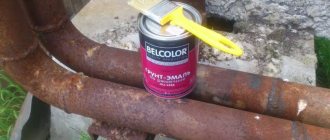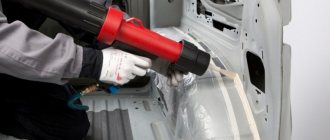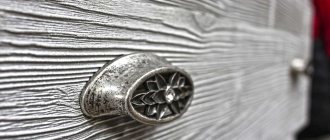Pearlitic structure in steel
To understand the pearlite structure, consider steel with a carbon content of 0.77%, for example, U8 steel. If you heat it to a temperature of 800 ºС and hold it at this temperature for 1-2 minutes, then in a high-temperature microscope it would look like what is shown at the top of Figure 1 - the structure of completely austenitic grains.
After cooling to a temperature below A1 - below 727 ºС - and holding at it for 5-10 minutes, the austenite grains will be completely replaced by completely new grains - pearlite, as shown at the bottom of Figure 1.
Unlike austenitic or ferritic grains, pearlite grains are not a single phase. Moreover, they consist of a mixture of two phases - ferrite and cementite, forming a unique microstructure. To see all the details of this microstructure, a small area within the pearlite grain must be viewed at very high magnification, as shown at the bottom right of Figure 1.
Materials for the production of silicate concrete
The main binder component in silicate concrete is finely ground lime or fluffed lime, which, in combination with aggregates, constitutes the main raw material for the production of silicate concrete. After adding water and subsequent heat treatment in autoclaves, the silicate concrete mixture turns into a durable concrete product.
Lime used for the production of silicate mixtures must meet the following properties:
- average hydration rate;
- moderate exothermic effect;
- the entire fraction must be equally fired;
- MgO less than 5%;
- Lime slaking time: no more than 20 minutes.
Underburning of the lime mass leads to increased consumption of material. Overburning reduces the hydration time of lime, which leads to swelling, cracks on the surface of products, etc.
Lime
Lime used for the production of silicate concrete is usually used in the form of finely ground lime mixtures of the following composition:
- calcareous-siliceous - a combination of lime and quartz sand;
- lime-slag (lime and blast furnace slag);
- lime-ash - fuel oil shale or coal ash and lime;
- lime-expanded clay and other similar components obtained from industrial waste of porous aggregates;
- lime-belite binders obtained by low-temperature firing of a lime-siliceous dry mixture and quartz sand.
The following materials are used as siliceous fillers:
- quartz ground sand;
- metallurgical (blast furnace) slag;
- thermal power plant ash.
Most often, quartz sands of medium and fine fractions are used as fillers, which in their composition should look like this:
- 80% or more silica;
- less than 10% clay inclusions;
- 0.5% or less mica impurities.
Large inclusions of clay in the structure of quartz sand reduce the frost resistance and strength of silicate concrete.
Quartz sand
Finely ground quartz sand has a significant influence on the formation of high performance properties of silicate concrete. Thus, with increasing dispersion of sand particles, the frost resistance, strength and other characteristics of silicate materials increase.
When choosing components for the production of silicate concrete, you need to know the following:
- Binder consumption increases in proportion to the increase in concrete strength.
- A decrease in the consumption of binders in the silicate mixture is observed with an increase in the dispersion of fine quartz sand, and increases with an increase in the molding humidity of the silicate concrete solution.
- The dispersion of ground quartz sand should be 2.5 times lower than the dispersity of ground lime.
Cementite and ferrite in perlite
The pearlite structure consists of alternating plates of ferrite and cementite. Ferrite plates are much thicker than cementite plates. They occupy 90% of the total grain volume, compared to the remaining 10% of cementite.
At the boundaries of pearlite grains, a sharp change in the orientation of the plates occurs, as can be seen on the microstructure of a real steel sample under an electron microscope at a magnification of x11000 (Figure 2).
Figure 2 – View of pearlite under an electron microscope. Initial magnification x11000
In this photograph, the cementite plates are the light phase, and the ferrite plates are the dark phase. The cementite plates are only 0.1 microns thick—too thin to be seen with a light microscope. Despite the fact that cementite is brittle, perlite is not brittle. This is explained by the small size of the cementite plates and the large volume fraction of plastic ferrite.
Materials for the production of silicate concrete
The main binder component in silicate concrete is finely ground lime or fluffed lime, which, in combination with aggregates, constitutes the main raw material for the production of silicate concrete. After adding water and subsequent heat treatment in autoclaves, the silicate concrete mixture turns into a durable concrete product.
Lime used for the production of silicate mixtures must meet the following properties:
- average hydration rate;
- moderate exothermic effect;
- the entire fraction must be equally fired;
- MgO less than 5%;
- Lime slaking time: no more than 20 minutes.
Underburning of the lime mass leads to increased consumption of material. Overburning reduces the hydration time of lime, which leads to swelling, cracks on the surface of products, etc.
Lime
Lime used for the production of silicate concrete is usually used in the form of finely ground lime mixtures of the following composition:
- calcareous-siliceous - a combination of lime and quartz sand;
- lime-slag (lime and blast furnace slag);
- lime-ash - fuel oil shale or coal ash and lime;
- lime-expanded clay and other similar components obtained from industrial waste of porous aggregates;
- lime-belite binders obtained by low-temperature firing of a lime-siliceous dry mixture and quartz sand.
The following materials are used as siliceous fillers:
- quartz ground sand;
- metallurgical (blast furnace) slag;
- thermal power plant ash.
Most often, quartz sands of medium and fine fractions are used as fillers, which in their composition should look like this:
- 80% or more silica;
- less than 10% clay inclusions;
- 0.5% or less mica impurities.
Large inclusions of clay in the structure of quartz sand reduce the frost resistance and strength of silicate concrete.
Quartz sand
Finely ground quartz sand has a significant influence on the formation of high performance properties of silicate concrete. Thus, with increasing dispersion of sand particles, the frost resistance, strength and other characteristics of silicate materials increase.
When choosing components for the production of silicate concrete, you need to know the following:
- Binder consumption increases in proportion to the increase in concrete strength.
- A decrease in the consumption of binders in the silicate mixture is observed with an increase in the dispersion of fine quartz sand, and increases with an increase in the molding humidity of the silicate concrete solution.
- The dispersion of ground quartz sand should be 2.5 times lower than the dispersity of ground lime.
Perlite at room temperature
If now our U8 steel with a carbon content of 0.77% is cooled from 700 ºC to room temperature, as shown in Figure 1, then the microstructure will not change significantly - no matter how slowly or how quickly it is cooled. Ferrite will remain almost pure iron, and cementite will remain with a carbon content of 6.7% and with the same crystal structure.
According to the phase diagram, when austenite is cooled below temperature A1 and maintained at it for a short time, the austenite will be completely replaced by a mixture of ferrite + cementite phases in one form or another. Further cooling of this two-phase mixture to room temperature does not produce any changes in the final ferrite + cementite microstructure.
Properties of silicate concrete
The main properties of silicate concrete are represented by the following indicators:
- Water absorption of silicate products, depending on the method of compacting the concrete mixture, is 10–18%.
- The frost resistance of high-strength silicate concrete reaches 100 cycles or more.
- High corrosion resistance - these parameters differ slightly from those of cement concrete.
- Heat resistance.
- Resistance to temperature and atmospheric influences.
- Low cost of production of finished products.
- Durability (up to 70 years).
Recommendations
- ^ a b
Smith and Hashemi, 2006, paragraph 363 - Durand-Charre 2003 harvnb error: no target: CITEREFDurand-Charre2003 (help)
- H. K. D. H. Bhadeshiya (2020). "Cementite." International Materials Reviews
.
65
(1): 1–27. Doi:10.1080/09506608.2018.1560984. - Ashrafzadeh, Milad; Soleimani, Amir Peyman; Panjepur, Masud; Shamanian, Morteza (2015). "Formation of cementite from a hematite-graphite mixture by simultaneous thermo-mechanical activation." Metallurgical and materials operations
B.
46
(2):813–823. Doi:10.1007/s11663-014-0228-3. S2CID 98253213. - Smith and Hashemi, 2006, pp. 366–372
- S. W. J. Smith; W. White; S.G. Barker (1911). "Magnetic transition temperature of cementite". Proc.
Phys. Soc. London .
24
(1): 62–69. Doi:10.1088/1478-7814/24/1/310. - Wagn F. Buchwald, Handbook of Iron Meteorites, University of California Press, 1975.
- Gunnar Hägg, Z. Christ.
, Vol. 89, p. 92-94, 1934. - Smith, William F. (1981). Structure and properties of engineering alloys
. New York: McGraw-Hill. pp. 61–62. ISBN 978-0-07-0585607. - Mannix, Liam (08/31/2019). “This meteorite came from the core of another planet. There's a new mineral inside of it." Age
. Retrieved 2019-09-14.
Materials for the production of silicate concrete
The main binder component in silicate concrete is finely ground lime or fluffed lime, which, in combination with aggregates, constitutes the main raw material for the production of silicate concrete. After adding water and subsequent heat treatment in autoclaves, the silicate concrete mixture turns into a durable concrete product.
Lime used for the production of silicate mixtures must meet the following properties:
- average hydration rate;
- moderate exothermic effect;
- the entire fraction must be equally fired;
- MgO less than 5%;
- Lime slaking time: no more than 20 minutes.
Underburning of the lime mass leads to increased consumption of material. Overburning reduces the hydration time of lime, which leads to swelling, cracks on the surface of products, etc.
Lime
Lime used for the production of silicate concrete is usually used in the form of finely ground lime mixtures of the following composition:
- calcareous-siliceous - a combination of lime and quartz sand;
- lime-slag (lime and blast furnace slag);
- lime-ash - fuel oil shale or coal ash and lime;
- lime-expanded clay and other similar components obtained from industrial waste of porous aggregates;
- lime-belite binders obtained by low-temperature firing of a lime-siliceous dry mixture and quartz sand.
The following materials are used as siliceous fillers:
- quartz ground sand;
- metallurgical (blast furnace) slag;
- thermal power plant ash.
Most often, quartz sands of medium and fine fractions are used as fillers, which in their composition should look like this:
- 80% or more silica;
- less than 10% clay inclusions;
- 0.5% or less mica impurities.
Large inclusions of clay in the structure of quartz sand reduce the frost resistance and strength of silicate concrete.
Quartz sand
Finely ground quartz sand has a significant influence on the formation of high performance properties of silicate concrete. Thus, with increasing dispersion of sand particles, the frost resistance, strength and other characteristics of silicate materials increase.
When choosing components for the production of silicate concrete, you need to know the following:
- Binder consumption increases in proportion to the increase in concrete strength.
- A decrease in the consumption of binders in the silicate mixture is observed with an increase in the dispersion of fine quartz sand, and increases with an increase in the molding humidity of the silicate concrete solution.
- The dispersion of ground quartz sand should be 2.5 times lower than the dispersity of ground lime.
Sources
- https://alit-stroi.ru/tehprocess/svojstva-cementita.html
- https://lfirmal.com/cementit-strukturnaya-sostavlyayushchaya-zhelezouglerodistyh-splavov/
- https://intehstroy-spb.ru/spravochnik/diagramma-sostoyaniya-zhelezo-uglerod.html
- https://armatool.ru/cementit-struktura-svojstva-vidy/
- https://TechnoRama.ru/raboty/svojstva-cementita.html
Iron-carbon alloys
Iron-carbon alloys may contain the following structural components:
- Ferrite (F) is a solid solution containing carbon and other elements in iron. It has a body-centered cubic lattice. The solubility of carbon in ferrite is very low, up to 0.005% at room temperature. At 727°C, the highest solubility of 0.02% ferrite is very ductile, soft and workable by applying pressure under cold conditions.
Austenite (a) is a solid solution of carbon and other G-iron elements. It is present only at high temperatures. the maximum solubility of carbon in g-iron is 1147% at 2.14°C and 727°C at 0.8%. This temperature is the lower limit for the presence of austenite in the iron-carbon alloy. Austenite is very ductile, but harder than ferrite.
